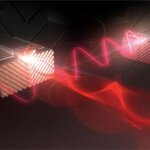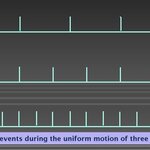Physics

I participated with pleasure last month to a four-day conference devoted to neutrino telescopes, NEUTEL 2009, in Venice. Venice is my home town, and walking in the morning to the conference venue in Palazzo Franchetti (see left), a big and beautiful palace on the Canal Grande, was a pleasant change from my usual commute by train with Padova. In this short report I wish to offer a summary of an enlightening talk I heard there: the one presented by Marco Cirelli, a CNRS researcher in theoretical physics at CEA/Saclay, near Paris.
The topic of the talk is all the rage these days: cosmology has…
Reporting on scientific results to a broad audience is difficult, in my opinion, not so much because of the need to explain things in a simple way -which is easy and fun, once you master the matter- as for the self-discipline you are forced to stick to.
Things that are obvious to you, because you have seen them and studied them for years, are not obvious to others, not even to fellow scientist from the other door who practice a just slightly different sub-field of research, let alone to the larger pool of smart readers who are drawn to science readings but have never taken an advanced course…

Part 1, which begins our examination of the question 'what is time?' can be viewed here.Part 2 Some travels through time can be viewed here.Part 3 discussing language, sequence and order, can be viewed here.Part 4 a brief discussion of clocks, Steno, Foucault and Allais, can be viewed here.Part 5 a time-free N-body heuristic, can be viewed here.Note: this blog on time is speculative, not established fact.
A Theory of Time Part 6 : Inertia, Information and The Arrow of TimeThus far, I have tried to show that the whole notion of time is problematic, that it is not a requirement in a…

Discover has an interview with genius physicist Murray Gell-Mann. Gell-Mann on Heisenberg:
But by the time I knew him, although he was not extremely old, he was more or less a crank.
On Feynman:
[He] was pretty good, although not as good as he thought he was.
On Fermi:
[He] was good, but again with limitations—every now and then he was wrong. I didn’t know anybody without some limitations in my field of theoretical physics.
It's got to be irritating to be asked about Feynman every interview he gives, but hey - the dynamic between Gell-Mann and Feynman was legendary, and a lot of us can't hear…

Applied scientists at the Harvard School of Engineering and Applied Sciences (SEAS) in collaboration with researchers from Hamamatsu Photonics in Hamamatsu City, Japan, have demonstrated, for the first time, lasers in which the direction of oscillation of the emitted radiation, known as polarization, can be designed and controlled at will. The innovation opens the door to a wide range of applications in photonics and communications. Harvard University has filed a broad patent on the invention.
Spearheaded by graduate student Nanfang Yu and Federico Capasso, Robert L. Wallace Professor of…

Spring has officially arrived. I don’t need the budding trees or the warmer temperatures to tell me – I can tell just by the chatter of birds that has returned, kicking into high gear as soon as the sky begins to lighten each morning. We have a large tree in our back yard, and it appears to be one of the neighborhood meeting places for local birds of all shapes and sizes. It’s not something I mind; in fact I’m sure I’ve encouraged it by hanging a fairly substantial bird feeder on one of the lower branches of this particular “meeting tree.”
As the weather warms and my family and I spend more…

Part 1, which begins our examination of the question 'what is time?' can be viewed here.Part 2 Some travels through time can be viewed here.Part 3 discussing language, sequence and order, can be viewed here.Part 4 a brief discussion of clocks, Steno, Foucault and Allais, can be viewed here.
Note: this blog on time is speculative, not established fact.
A Theory of Time Part 5 : Some Thoughts on Velocity
"the only method to obtain positive knowledge is to leave the incomprehensible unexplained until sooner or later the explanation emerges of its own accord from facts which are so…

Highlighting another challenge to the development of quantum computers, theorists at the National Institute of Standards and Technology (NIST) have shown* that a type of software operation, proposed as a solution to fundamental problems with the computers’ hardware, will not function as some designers had hoped.
Quantum computers—if they can ever be realized—will employ effects associated with atomic physics to solve otherwise intractable problems. But the NIST team has proved that the software in question, widely studied due to its simplicity and robustness to noise, is insufficient for…

A team of astronomers, led by Dr. Bo Wang from the Yunnan Observatory of the Chinese Academy of Sciences, have developed a new model which explains the formation of the most youthful type Ia supernovae. In a paper published in Monthly Notices of the Royal Astronomical Society, Dr. Bo Wang and his team show how the transfer of material from a ‘helium star’ to a compact white dwarf companion causes these cataclysmic events to take place early on in the life of the galaxy they formed in.
Most type Ia supernovae are believed to occur when a white dwarf (the superdense remnant that is the end…